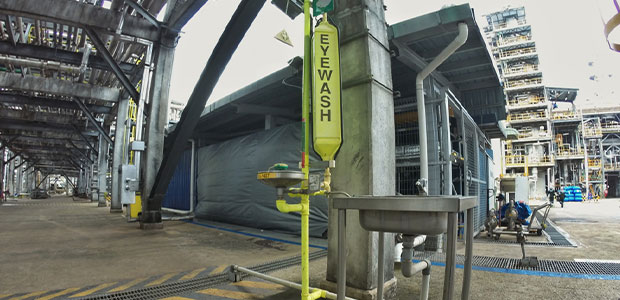
Don't Let Your Liquid Assets Become Frozen
Working in sub-zero temperatures? Here is how to ensure reliable heated water for drench showers and eyewashes.
- By Ryan Pfund
- Feb 01, 2022
The realities of weather are always present on a job site and must be carefully considered by safety managers. Fortunately, today’s advanced water heating technologies make emergency drench showers and eyewashes fully operational 365 days per year, whether it’s or -40 degrees Fahrenheit sub-zero or 120 degrees Fahrenheit above zero.
Speaking of brutally cold weather, the coldest temperature in the U.S. was documented in Alaska when temperatures plunged to -80 degrees Fahrenheit below zero on Jan. 23, 1971 in Prospect Creek in central Alaska.1 The highest temperature in the U.S. and worldwide, 134 degrees Fahrenheit, was recorded in Death Valley, California, on July 10, 1913.
There are a variety of eyewashes, drench showers and water heating technologies that help keep employees safe in extreme, frigid environments—even if there is an absence of plumbed water. These freeze-protected products can be installed outdoors in places ranging from petrochemical facilities, offshore platforms, oil and gas refineries, power generation plants, mines and so on.
Safety Showers in Freezing Environments
Extreme environments can lead to many concerns when it comes to safety showers. Sub-zero temperatures can cause pipes to break or burst and cause systemic damage affecting the usability of the safety equipment. ANSI/ISEA Z358.1 Section 4.5.5 states, “Where the possibility of freezing conditions exists, the emergency shower shall be protected from freezing or freeze-protected equipment shall be installed.”
No matter the weather, the current ANSI/ISEA Z358.1–2014 American National Standard for Emergency Eyewash and Shower Equipment calls for emergency eyewashes and drench showers to deliver tepid water (60–100° F/15.5–37.7° C) for a full 15 minutes to ensure adequate flushing of hazardous materials from users' bodies and/or eyes. For drench showers the minimum flow rate is 20 GPM (76 L-MIN), for Eye/Face Wash the minimum flow rate is 3.0 GPM (11.4 L-MIN) and for Eye Wash the minimum flow rate is 0.4 GPM (1.5 L-MIN).
Moreover, for quick and easy access, it’s recommended that eyewash stations be within 10 seconds or 55 feet (17 meters) from a potential hazard. In some cases, it is necessary to supply heated water to more than one safety shower simultaneously. The water for all equipment must sustain the required temperature, volume and flow for the requisite amount of time needed.
It is also important to inspect and test the eyewash and drench showers on a weekly basis. The ANSI/ISEA Z358.1 standard requires a weekly activation to ensure flushing fluid is available and to completely flush out stagnant water from the dead leg.
This article originally appeared in the February 1, 2022 issue of Occupational Health & Safety.